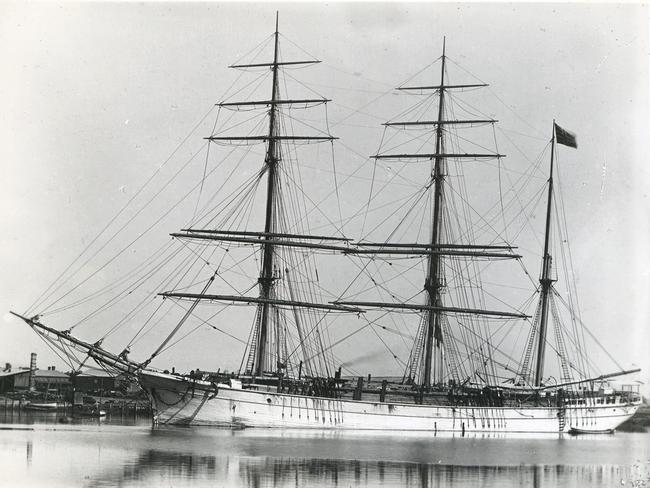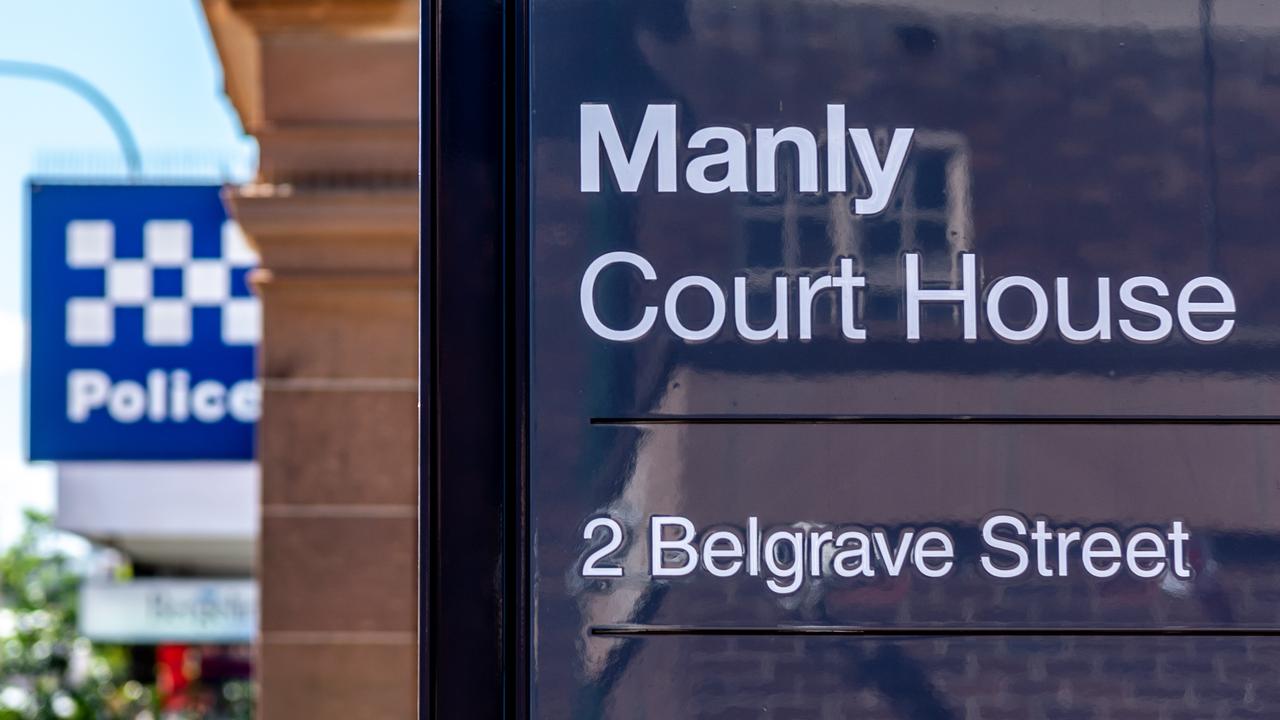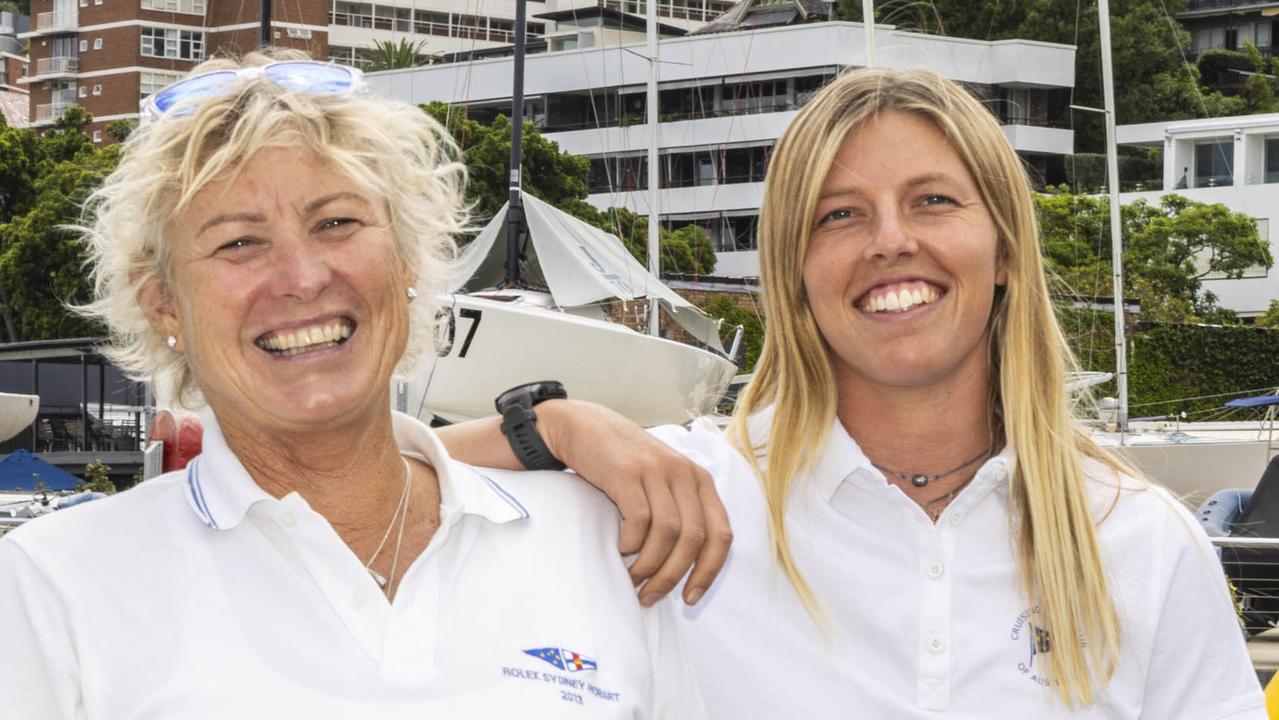The ill-fated barquentine that could have been named Narrabeen
Once there was a ship – a fine barquentine, no less – that its new owners were going to call the Narrabeen, although they never did.

Manly
Don't miss out on the headlines from Manly. Followed categories will be added to My News.
Once there was a ship – a fine barquentine, no less – that its new owners were going to call the Narrabeen, although they never did.
Which is probably for the best, given that the ship led a mixed life and came to grief a few years later when it went aground on a reef within sight of Honolulu.
Perhaps the superstition among sailors that changing the name of a ship brings bad luck was in play that fateful day because the ship had already had its name changed once, several years before its new owners thought of changing it again to Narrabeen.
The ship was built in 1892 in the Norwegian town of Sandefjord and started life as a barque, a ship typically with three masts, in which the foremast and mainmast are square-rigged and the mizzenmast is fore-and-aft rigged.
The ship was built for a local firm, Skibsaktieselskabet Fortuna, and Fortuna was the name the ship was given.
The Fortuna was 64m long, 13m wide, weighed 1239 tonnes and was skippered by Thor Mikkelsen, who supervised the ship’s construction and was probably a part-owner of it.
The Fortuna’s first voyage was from the Norwegian port of Frederickstadt to Geelong with a cargo of timber that took 90 days to sail the 24,140km without incident.

For the next 14 years Captain Mikkelsen sailed between ports in Australia, New Zealand, South Africa, Indonesia, Ceylon, Russia, England and the United States with cargoes of timber, coal and wheat.
In January 1899, Captain Mikkelsen placed the Fortuna at the disposal of the organising committee of Hobart’s Regatta Day as the flagship.
Nut near disaster occurred in April 1900 when a fire broke out in the coal in the Fortuna’s hull while it was in Honolulu.
The ship was immediately docked and water was pumped into its hull and the fire extinguished.
Two years later the Fortuna was dodging icebergs in Arctic waters after unloading a cargo to the Russian port of Archangel.

In 1904 the Fortuna was sold to another Norwegian company that changed the name of the ship to Helga but retained Captain Mikkelsen as captain.
In 1905, Captain Mikkelsen’s son Halbert married an Australian girl in the Norwegian town where the Fortuna was built.
The two had met in Bunbury, Western Australia, where the Fortuna had previously delivered a cargo.
But within a year of its name being changed from Fortuna to Helga, the ship was badly damaged in a storm.
The Helga left Newcastle on October 13, 1905, for Honolulu laden with 1633 tonnes of coal.
But three days out of Newcastle and 628km from its starting point, the ship was hit by a storm that took away its foretopmast, mainmast and mizzen mast, leaving only the fore lower mast standing.
For three days the loose masts and spars could not be cut free and they kept bumping against the side of the hull, threatening to punch holes in it.
Eventually all the masts and spars were cut free but the Helga continued to be tossed about in the storm.

After the storm had abated, the Helga was jury-rigged and managed to limp into Sydney on November 11, a month after it had left Newcastle, “looking more like a hulk than a staunch craft”, as one Sydney newspaper noted.
“She was towed into Sydney little more than a derelict, having been literally swept clear of all her spars with the exception of the stump of her foremost, and with a few rags of sails set she was navigated close enough to the Australian coast to pick up a tug,” one newspaper reported.
The following month it was reported that it would cost £5000 to put the Helga in a seaworthy condition “and it is doubtful that the work will be proceeded with,” another Sydney newspaper opined.
“It is possible that she will end her days as a hulk in Sydney Harbour.”
But in February 1906, it was reported that the Helga was now under new owners, Ivan Nelson and George Robertson of Sydney, and that it would be refitted and rigged as a barquentine.
Whereas as a barque typically has three masts, of which the foremast and mainmast are both square-rigged and the mizzenmast is fore-and-aft rigged, on a barquentine only the foremast is square-rigged and the other masts are fore-and-aft rigged.

“Messrs. Nelson and Robertson have lately imported from Puget Sound (United States) two lower masts, each measuring 115 feet long, 3 feet 10 inches in circumference at the butt, and 3 feet at the head, and weigh 14 tons,” it was reported.
“These spars, which are said by the dock people and local shipwrights to be the largest spars ever placed in a sailing vessel in Port Jackson, were brought down from Puget Sound to Newcastle by the steamer Kelvinbank and afterwards towed to Sydney and taken to Jubilee Dock preparatory to being placed in the Helga.
“After the spars are fixed, two top masts each measuring 60 feet will be fitted, and the Helga will then look somewhat like an American barquentine with her tall sticks and will no doubt be one of the fastest vessels trading out of Sydney Harbour.”
The restored Helga’s first charter was to ship coal from Newcastle to Honolulu but before it set sail, it was reported in the Sydney newspapers that its owners had registered a new company, the Narrabeen Ship Company Limited, the capital of which was £3000 in £1 shares, and that the Helga would be renamed the Narrabeen.

For reasons unknown but possibly connected to the sailors’ suspicion that changing the name of a ship would bring bad luck upon it, the new owners abandoned the notion of renaming the ship and retained the name Helga.
Along with its new rigging, the Helga now had a new skipper, Captain Pearson, who became part-owner of the Helga.
The Helga’s first charter under its new skipper was a cargo of 1696 tonnes of coal from Newcastle to Honolulu in February 1907.
But when the Helga sailed into Hawaiian waters, it did so with its flag at half-mast – the ship’s apprentice, Carl Stacey, had been washed overboard while lashing the ship’s anchor in heavy seas.
Captain Pearson reported: “On Friday morning we lost an apprentice.”
“He was washed overboard and drowned.
“We threw lifebuoys and floating lights overboard and launched two boats but could find no trace of him.
“The boats came back to the ship and we beat around the position with men aloft looking out for him till dark but without success.”

In October 1908, the Helga was again dismasted in a storm and limped into Wellington, New Zealand, while carrying railway iron and coal from Newcastle.
To make matters worse, a fire broke out in the coal the Helga was carrying in its hold but it was extinguished by the crew.
Again it was thought the Helga would be scrapped or used as a hulk but the ship was repaired in Wellington and in early 1909 Captain Pearson sold his share in the Helga to Captain Wall, of Auckland.
By May 1910, the Helga was under the part-ownership of Edwin Pike and Peter Burrows, two Sydney shipowners and timber merchants.
But disaster struck two months later while the Helga was sailing from Newcastle to San Francisco laden with 1615 tonnes of coal.
Seven days after leaving Newcastle, the Helga was caught in a gale that generated big seas, during which the ship sprang a leak.

The ship’s steam pump was used for 102 days straight, by which time the ship was still 1450km from San Francisco and sailing into a strong headwind, so Captain Wall decided to make for Honolulu in an attempt to save the ship, its crew and his wife and daughter, who were also on board.
As it neared Honolulu, Captain Wall kept the vessel close to shore, taking soundings all the time.
But the ship was overtaken by a light wind that swept the Helga towards Waikiki Reef.
The anchors were dropped in four fathoms (7.3m) of water but failed to hold the ship and it bumped against the reef.
The lights from the city of Honolulu could be seen from the ship and after the Helga got into difficulties, blue lights and rockets were fired but no help came.
The Helga soon became a total wreck but not before all on board were rescued by a tug that finally came out to the doomed ship.
The cargo was insured but the ship was uninsured.
Thus came to an end the ship that might have been named Narrabeen.


